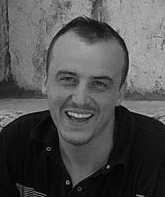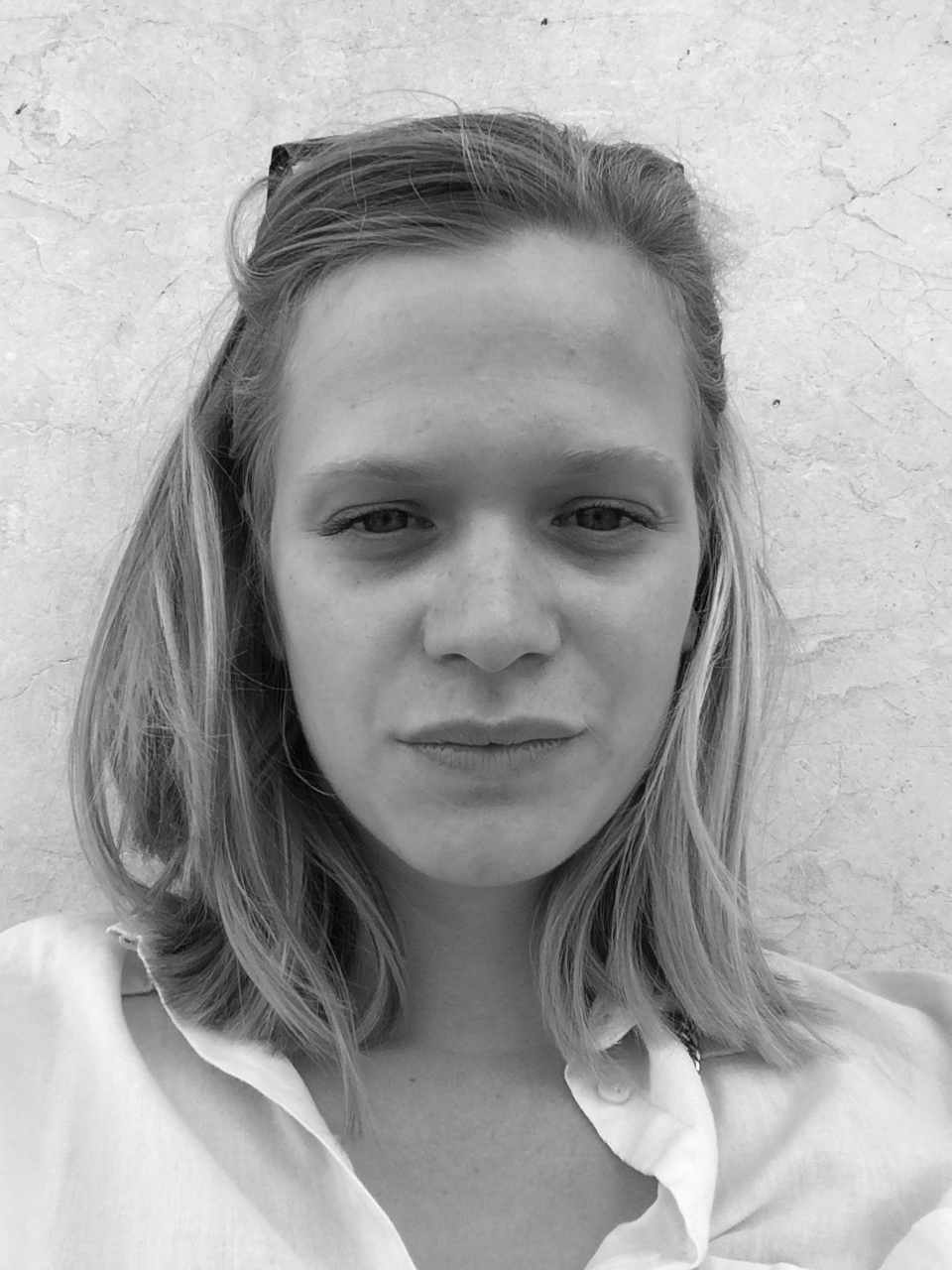Meet our Team

Prof. Cristina Lemorini
Associate Professor - "Sapienza" Università di Roma, Italy
Email: cristina.lemorini@uniroma1.it
Cristina Lemorini is Associate Professor at the Department of Classics at “Sapienza” Universotà di Roma (Italy); she teaches experimental Archaelogy for undergraduate and graduate students.She is an expert of use-wear analysis and she is in charge of the LTFAPA . She is directly involved in the major part of the researches carried out at the laboratory and she is the supervisor of B.A., M.A. and PhD research projects regarding use-wear analysis, residues analysis and eperimental archeology. She collaborates on various national and international projects on typological, technological and functional analysis of lithic industry, polished stones, macro-lithic artefacts, hard animal material artefacts, clay artefacts from both Plio-Pleistocene and Holocene archaeological sites and ethnographic contexts. 2007-2010 She was the director of the project: “Developing a FTIR (Fourier Transfer InfraRed) spectra collection for interpreting residues of the prehistoric activities.”, supported by The Wenner-Gren Foundation (NY).Since 2009 she coordinates a research project of traces analysis of Paleolithic contexts of Israel supported by the Ministry of Foreign Affairs (MAE Project).In 2012 she obtained a Grant FARI (Sapienza University Grant) to test the feasibility of a project of traces analysis of prehistoric stone objects and stone buildings by the application of digital close range photogrammetry. In 2012 she was co-organizer of the International Workshop “An integration of use-wear and residues analysis for the identification of the function of archaeological stone tools”, held in Rome (5-7 of March) and supported by a the Conference and Workshop Grants Program of Wenner-Gren Foundation (NY).In 2013 she was co-organizer of the International Workshop “The origin of recycling: a Paleolithic perspective”, held in Tel Aviv (7-10 of October) and supported by a the Conference and Workshop Grants Program of Wenner-Gren Foundation (NY).Since 2013 she is part of the team of scholars involved in the study of lithic in the Ҫatalöyük Research Project; she is team leader of the use-wear analysis of the chipped stone tools.Since 2014 she is part of the team of scholars involved in the study of textile tools from Etruscans contexts stored up at the Museum of Villa Giulia, Rome.
Pubblications (2015-2016)
Barkai R., Lemorini C., Vaquero M. (2015), The origins of recycling: a Paleolithic perspective, Quaternary International, pp. 1-3. http://doi.org/10.1016/j.quaint.2014.12.044.
Lemorini C. , Bourguignon L., Zupancich A., Gopher A., Barkai R. (2015), A scraper's life history: Morpho-techno-functional and use-wear analysis of Quina and demi-Quina scrapers from Qesem Cave, Israel, Quaternary International, http://doi.org/10.1016/j.quaint.2015.05.013
Santucci E., Marano F., Cerilli E., Fiore I., Lemorini C., Palombo M.R., Anzidei A.P., Bulgarelli G.M., (2015), Palaeoloxodon exploitation in the late Middle Pleistocene site of Polledrara di Cecanibbio (Rome, Italy), Quaternary International, http://doi.org/10.1016/j.quaint.2015.08.042.
Aureli D., Rocca R., Lemorini C., Modesti V., Scaramucci S., Milli S., Giaccio B., Marano F., M:R. Palombo, Contardi A., (2015), Mode 1 or mode 2? “Small tools” in the technical variability of the European Lower Palaeolithic: The site of Ficoncella (Tarquinia, Lazio, central Italy), Quaternary International, http://doi.org/10.1016/j.quaint.2015.07.055.
Nicoud E., Aureli D., Pagli M., Villa V., Chaussé C., Agostini S., Bahain J.-J., Boschian G., Degeai J.-Ph., Fusco F., Giaccio B., Hernandez M., Kuzucuoglu C., Lahaye, C. Lemorini C., Limondin-Lozouet N., Mazza P., Mercier N., Nomade S., Pereira A., Robert V., et al. (2015), Preliminary data from Valle Giumentina Pleistocene site (Abruzzo, Central Italy): A new approach to a Clactonian and Acheulian sequence, Quaternary International, http://doi.org/10.1016/j.quaint.2015.08.080
Aureli A., Contardi A., Giaccio B., Jicha B., Lemorini C., Madonna S., Magri D., Marano F., Milli S., Modesti V.,Palombo M.R,Rocca R. (2015), Palaeoloxodon and Human Interaction: Depositional Setting, Chronology and Archaeology at the Middle Pleistocene Ficoncella Site (Tarquinia, Italy). PLOSone, April 21, 1-27. http://doi.org/10.1371/journal.pone.0124498
Zupancich, A., Lemorini, C., Gopher, A., Barkai, R., 2015. On Quina and demi-Quina scraper handling: Preliminary results from the late Lower Paleolithic site of Qesem Cave, Israel. Quat. Int. 1–9. http://doi.org/10.1016/j.quaint.2015.10.101
Zupancich, A., Nunziante-Cesaro, S., Blasco, R., Rosell, J., Cristiani, E., Venditti, F., Lemorini, C., Barkai, R., Gopher, A., 2016. Early evidence of stone tool use in bone working activities at Qesem Cave, Israel. Sci. Rep. 6, 1–7. http://doi:10.1038/srep37686
Falzetti,S., Garcea,E.A.A.A, Lemorini, C. Drudi, S. & Mironti, V. 2017 From Aterian Notch to Aterian Tang: How to Make a Technological Invention, African Archaeological Review, doi 10.1007/s10437-017-9258-y.
Isabella Caricola
Temporary Research Fellow - “Sapienza Università di Roma” Hidden Foods - H2020 ERC Starting Grant
PhD - "Sapienza" Università di Roma (Italy) in joint research with Université Paris 1 - Panthéon Sorbonne (France)
Email: isabella.caricola@uniroma1.it
Isabella focuses her research on the technology and us of macrolithic tools. In 2010 she graduated in “Science of Cultural Heritage” focusing in “Archaeology" at the University "Aldo Moro" of Bari (Italy). In 2013 she obtained her M.A. in Prehistoric Archaeology at "Sapienza" Università di Roma (Italy) with a dissertation on use-wear analysis of macrolithic tools coming from the prehistoric site of Grotta della Monaca (Calabria-Italy), under the supervision of Prof. Cristina Lemorini. In 2013 she studied the macrolithics come from the site of Phaistos (Crete) with Prof. Cecilia Conati Barbaro, funded by the “Institute for Aegean Prehistory”. Currently Isabella is a PhD candidate at “Sapienza” Università di Roma with a joint research in collaboration with University Paris1-Panthéon Sorbonne with a research project entitled: “The Function of Macrolithic Tools and the Exploitation of Mineral Resources in the Western Mediterranean in Recent Prehistory”. The project is supervised by Prof. Cristina Lemorini, Dr. Caroline Hamon and Prof. François Giligny. Moreover, Isabella is an active a member of the Regional Centre of Speleology "Enzo Medici” based in Roseto Capo Spulico (Italy).
Pubblications
Breglia, F., Caricola, I., Larocca, F., 2016. Macrolithic tools for mining and primary processing of metal ores from the site of Grotta della Monaca (Calabria, Italy). J. Lithic Stud. 3. http://doi:10.2218/jls.v3i3.1651
Caricola, I. & Lemorini, C., (in press), Strumenti da macinazione e abrasione. La sperimentazione e l’analisi delle tracce d’uso. In: Grotta della Monaca. Studi e ricerche I, (Larocca F., Ed.) Centro Regionale di Speleologia “Enzo dei Medici”, Roseto Capo Spulico. (in Italian) ("The grinding and abrasion tools. Experimentations and use-wear analysis”)
Caricola, I. & Lemorini, C., (in press), Experimentation and traces analysis of macro-lithic tools: the case of “Grotta della Monaca” Cave (Sant'Agata di Esaro-Cosenza, Italy). In: Playing with the time. Experimental archeology and the study of the past (Alonso R., Canales D., Baena J., Eds.), Servicio de Publicaciones de la Universidad Autónoma de Madrid.

Stefano Caruso
PhD - "Sapienza" Università di Roma, Italy
Email: stefano.caruso@uniroma1.it
Current Research ProjectStefano graduated at “Sapienza” Università di Roma in 2009 with a dissertation focused on the “Museum rendering of Bronze Age Italian Archaeological Sites”. This study is based on an in-depth analysis of various Italian and British museums involving technical, didactic, aesthetic, perceptive and commercial factors. The work includes recommendations and criteria for the establishment of modern Museum settings. In 2012 Stefano obtained his Masters degree at “Sapienza” Università di Roma with a dissertation on dissertation on “Elements of experimental archaeology applied to Egyptian Predynastic rock art” (4500-3000 B.C.). This dissertation, based on an in-depth historical and geographical study of Egyptian Predynastic rock art, investigates and documents the specific morphological features of the pecking marks that form the petroglyphs. The experimental part consists in the replication of these petroglyphs in a laboratory environment, to better understand the creation methodology from the technological and handicraft points of view. Currently Stefano is pursuing a PhD in Prehistoric Archaeology entitled: “Stonework in the Neolithic Maltese Megalithic contexts: Technology, Function and Culture”. This project aims to improve the understanding of issues related to raw material extraction, production of various artefacts and building techniques related to globigerina and coralline limestone in the Neolithic Maltese Megalithic contexts. The main analysis methodologies utilised are experimental archaeology and use-wear analysis.
Pubblications
Caruso, S., (2009) Museum rendering of Bronze Age Italian Archaeological Sites. B.A. Dissertation, available in the Dissertation Archive of the project ArchaeologicalTraces.org http://www.archaeologicaltraces.org/index.php?option=com_content&view=article&id=54:da0003&catid=36:dissertations-archive-info&Itemid=63
Caruso, S. Usai, A. , S. Sebis, Melis, R. T., Castangia, G., Pau, L., Sanna, I., Sechi, S., Serreli, P. F., Soro, L., Vidili, S., Zedda, M., Zupancich, A. (2009). L’insediamento nuragico di Sa Osa (Cabras – OR). L’occupazione del Bronzo Recente e Finale, in AA.VV., La preistoria e la protostoria della Sardegna, Atti della XLIV Riunione dell’Istituto Italiano di Preistoria e Protostoria, Cagliari-Barumini-Sassari, 23-28 november 2009
Caruso, S., Gatto, M.C., Castangia G., Curci A., Pitre M., Silani M., Roma S. (2010) Le village prédynastique de Nag el-Qarmila, Aswan: problèmes de préservation et interprétation”, in Cahiers Caribéens d'Egyptologie n. 13Caruso, S., A. Zupancich (2011), Analisi degli oggetti in Ossidiana del sito di Sa Osa (OR). Tharros Felix IV, Carocci ed., Rome
Caruso, S., D'Errico, D., Maffezzoli, D. (2012), Capo Mannu Project 2011 – Lithic Industry, in Traces in Time n°2, http://archaeologicaltraces.org/OJS/index.php/traces_in_time/article/view/20

Davide D'Errico
PhD Candidate - Leiden University, Netherlands
Email: archeodavidederrico@gmail.com
Current Research ProjectIn 2008 Davide graduated in Palaeoethnology at “Sapienza” Università di Roma (Italy), with a dissertation on the “The body treatment in some Italian Eneolithic contexts”. In particular he taken into consideration the sites of Pontecagnano in Campania, Selvicciola in Lazio and Piano Vento in Sicily. He described the general features of the burial sites paying particular attention to the burial forms, the internal disposition of the spaces inside the tombs and the steps of the funeral ritual.In 2011 Davide obtained his master's degree at “Sapienza” Università di Roma (Italy) in Experimental Archeology with a dissertation on “Men Agriculture and experimentation. Cultural choices and exploitation of plants in the Neolithic Age”. In this study he presented the results of an analysis on the use-wear produced by plant processing on flint tools from the two Italian Neolithic contexts of Masseria Candelaro (Foggia) and Fondo Azzollini (Brindisi) and from the site of Çayönü, eastern Anatolia (Turkey). Currently Davide is a PhD candidate at Leiden University (Netherlands) carrying out a project focused on the prehistoric communities of Eastern Anatolia during the Late Chalcolithic. In particular the project aims to analyse the lithic industries, from a techno-functional point of view, in relation to the dynamics of social-economic changes of Eastern Anatolia communities during the IV and III millennium B.C.
Pubblications
D’Errico D., Glossy tools: innovations in the method of interpretations of use wear produced by plant processing. In: Marreiros J., Bicho N., Gibaja J.F. (Eds) International conference on use-wear analysis, Use Wear 2012. Proceeding of the International Conference on use-wear analysis, Faro, Portugal 10-11-12 October, Cambridge Scholars Publishing, pp. 24-35.
Lemorini C, D’Errico D., Use wear analysis 2014 in “Catalhoyuk 2014 archive report”
Lemorini C, D’Errico D., Use wear analysis 2013 in “Çatalhoyuk 2013 archive report” .
D’Errico D., “Uomini, agricoltura e sperimentazione”. Scelte culturali e sfruttamento dei vegetali nel Neolitico”, 2011 A.T.P.G. Society, Dissertation Archive Series (ISSN 2038-7083). http://archaeologicaltraces.org/index.php?option=com_content&view=article&id=91:da0011&catid =36:diss ertations-archive-info&Itemid=63
D’Errico, D. 2017 New perspectives for recognizing use wear from cereals, Journal of Archaeological Science Reports 17, pp. 199-210 https://doi.org/10.1016/j.jasrep.2017.03.043.

Vanessa Forte
Marie Curie Research Fellow, McDonald Institute for Archaeological Research, Cambridge, United Kingdom
Emaill: vf261@cam.ac.uk
Website: http://www.arch.cam.ac.uk/directory/vf261
Vanessa focuses her research interests in the analysis of use and technology related wear on ceramics.She received her BA in 2007 in Prehistoric Ecology (Supervisor: Prof.ssa Alessandra Manfredini) with a dissertation on a domestic structure from the Copper Age site of Maddalena di Muccia (Macerata-Italy).In 2010 she received her MA in Prehistoric Ecology with a dissertation (Supervisor: Prof.ssa Alessandra Manfredini and Prof.ssa Cecilia Conati Barbaro) on the technological and functional study of the pottery production coming from the Copper Age site of Maccarese, Loc. Le Cerquete-Fianello- Fiumicino (Roma-Italy) developing a preliminary approach based on traces analyses on pottery.In 2015 Vanessa obtained her PhD (with scholarship) in Prehistory at Sapienza University of Rome with a dissertation on technology and function of the Copper Age pottery production of the Rome Area. During this research she developed a dedicated methodology based on an integrated approach of traces analyses, compositional analyses, experimentation and residues analysis, which permitted to define the cultural traditions developed in the Rome Area between the 4th and the 3th millennium BC. The research is focused on the detailed examination of the pottery production based upon the decomposition of the vessel. Starting with the compositional analysis of clay pastes (petrographic analysis on thin sections, XRF) she reconstructed the sourcing strategies, the clay sources exploited in the area and defined the various clay recipes used in time. Technological choices were completed thorough a detailed analysis of the vessel modeling techniques and pottery firing techniques used.A major role in Vanessa’s research is played by the analysis of the samples under a microscope, applying a Low Power approach, and by a dedicated experimental framework that allowed to study and define the modeling techniques, surface treatments, decorations techniques, along with the exploited tools, in order to reconstruct the involved gestures, which are only hypothesised trough the study of traditional contexts. From 2004 Vanessa took part to various archaeological excavations and surveys in Italy and from 2015 she collaborates with the Iraqi-Italian mission at Abu Tbeirah (Iraq) for the technological and functional study of the pottery production unearthed at the site (Sapienza University of Rome).Since 2010 Vanessa gave several lessons about pottery technology and use in collaboration with various academic courses of archaeology and public demostrations about the pottery modelling. Actually Vanessa is an Honorary Fellow in Prehistoric Ecology at Sapienza University of Rome and she is working to develop the application of a high power approach to study the technological and functional traces on ceramic materials.
Pubblications
Forte,V. & Lemorini, C., in publication, Traces analyses applied to textile activities: an assessment of the method through the case study of ceramic tools during the 1st millennium BCE in Central Italy, Origini
Forte V, Medeghini L 2015. A preliminary study of ceramic pastes in the copper age pottery production of the Rome area. Archaeological and Anthropological Sciences. http://doi.org/10.1007/s12520-015-0261-42
Forte V (2015) Tecnologia e funzione nella produzione ceramica eneolitica del territorio di Roma: casi studio, problemi e potenzialità della ricerca. Tesi di Dottorato in Archeologia, XXVI Ciclo Sapienza Universita di Roma, a.a. 2014.Pubblicazioni Aperte Digitali della Sapienza http://hdl.handle.net/10805/2653
Forte V., 2014. Investigating pottery technological pattern through macrowear analysis: The chalcolithic village of Maccarese (Italy). In Marreiros J., Bicho N., Gibaja Bao J. (eds.) International conference on Use-wear analysis: Use Wear 2012. Cambridge Scholars Publishing pp.619-629.

Flavia Venditti
Post Doc at Tel Aviv Universty, Israel
PhD - "Sapienza" Università di Roma, Italy
Emaill: flavia.venditti@gmail.com
Current Research Project
Flavia focuses her research on functional analysis of quartz and flint lithic industries. In 2008, she obtained her B.A. at “Sapienza” Università di Roma with a dissertation on the study of the dolmenic structures in South Italy. During her M.A., she started working in the field of use wear analysis under the supervision of Prof. Cristina Lemorini at the LTFAPA. Flavia focused her research on a quartz lithic industry of a Middle Palaeolithic site in Quercy (France) which ended with a dissertation titled “Per l’analisi funzionale di manufatti in quarzo. Creazione di un protocollo sperimentale. Studio funzionale dell’industria litica proveniente dal sito Paleolitico di Coudoulous I (Quercy, France)”. In 2012 she took part to an “Erasmus Intensive Programme” organised by Musée National d’Historie Naturelle at Les Eyzies-de-Tayac (Dordogne, France) from 29th May to 12th June. In 2013, she updated the “Thesaurus” for the lithic industries definitions in collaboration with the Central Institute for the Catalogue and Documentation. After her M.A. Flavia attended a Master class in Archaeological Heritage at “Sapienza” Università di Roma under the supervision of Prof. Alberto Cazzella. In 2014, she ended her Master with a dissertation titled “On the effects of the mechanical post-depositional alteration on quartz artefacts: the case study of Sai Island (Sudan)”. Flavia is actually involved in a Ph.D. research on the functional analysis of the recycled items of a Lower Paleolithic site of Qesem Cave (Israel). She is a member since 2011 of the Qesem Cave Project, taking part to the annual archaeological excavation at the site.
Pubblications
Venditti, F., Lemorini, C., Bordigoni, M., Zampetti, D., Amore, M., Tagliacozzo, A. (in press). The role of burins and their relationship with art through traces analysis at the Upper Palaeolithic site of Polesini Cave (Latium, Italy), Origini XXXVIII.
Zupancich, A., Nunziante-Cesaro, S., Blasco, R., Rosell, J., Cristiani, E., Venditti, F., Lemorini, C., Barkai, R., Gopher, A., 2016. Early evidence of stone tool use in bone working activities at Qesem Cave, Israel. Sci. Rep. 6, 1–7. http://doi:10.1038/srep37686
Mourre V., Venditti F., Lemorini C., Jaubert J., (submitted): Quartz and quartzite use in the Middle Paleolithic bison kill and butchery site of Coudoulous I (Southwestern France). Quaternary International
Venditti, F., Tirillò, J., & Garcea, E. A.A. (2015). Identification and evaluation of post-depositional mechanical traces on quartz assemblages: An experimental investigation. Quaternary International, pp.1–11. http://doi.org/10.1016/j.quaint.2015.07.046
Lemorini, C., Venditti, F., Assaf, E., Parush, Y., Barkai, R., & Gopher, A. (2015). The function of recycled lithic items at late Lower Paleolithic Qesem Cave, Israel: An overview of the use-wear data. Quaternary International, 361, 103–112. http://doi.org/10.1016/j.quaint.2014.07.03
Venditti, F. (2014). Use wear analysis on quartz and quartzite tools: methodology and application. In: Marreiros J., Bicho N., Gibaja J.F. (Eds) International conference on use-wear analysis, Use Wear 2012. Proceeding of the International Conference on use-wear analysis, Faro, Portugal 10-11-12 October, Cambridge Scholars Publishing, pp. 124-137.

Francesca Coletti
Phd Candidate – “Ruprecht Karl” University of Heidelberg and “Sapienza” University of Rome.
Emaill: francesca.coletti@uniroma1.it
Francesca focuses her research interest in the analysis of textile artefacts and textile fibers.
She obtained her BA in 2008 in Mediterranean and Near East Archeology at “Sapienza” University of Rome (Supervisor L. Del Francia Barocas) with the dissertation on the necropolis and textile found in the ancient cities of Akhmim-Panolis, Egypt. In 2012, she received her MA in Classic Archaeology at “Sapienza” University with the thesis “Il tessuto nell’antichità: materiali, produzione e contesti” (Supervisor M. Galli, part of the work was carried out in Munich at Ludwig-Maximilians University, as visiting student) dealt with the materials and production techniques of fabrics starting from the pre-protohistoric period up to the end of the Roman age. Great emphasis was given to an interdisciplinary approach, able to give an overall view of the issues connected to the subject, to privilege the completeness of the study based on the importance and evolution of the textile production in the ancient times. From May to August 2013, Francesca took part of the international scholarship “Leonardo Da Vici” at the Curt-Engelhorn-Centre Archaeometry (Supervisor S. Mitschke) on archaeometry applied to archaeological textiles and to improve practical experience on technical analysis of fabric and morphological analyses for the identification of textile fibers.
Currently, Francesca is involved in a Joint- PhD at Ruprecht Karl” University of Heidelberg and “Sapienza” University of Rome (Supervisors Prof. E. Pernicka, M. Galli), carrying out a research project focused on the analysis of the archaeological fabric and textile fibers from Pompeii and the surrounding area, in order to investigate their morphological and technological characteristics (type of spinning, weave and the differ type of fibers). The ongoing investigation is carried out on carbonized, mineralize textile remain as well as metallic threads and fabric.
From 2014 her research is involved in the project entitled “La cultura tessile a Pompei” in partnership agreement between the Pompeii archeological authority (“Parco Archeologico di Pompei”), the “Sapienza” University of Rome and the Curt-Engelhorn-Centre Archaeometry.
Pubblications
Galli M., Coletti F., Lemorini C., Mitschke S. (Forthcoming). The ‘Textile culture at Pompeii’ Project. In: Purpureae Vestes. Textiles and Dyes in the Mediterranean Economy and Society. vol. VI, Università degli Studi di Padova, 17/10/2016 - 20/10/2016.
Galli Marco, Coletti Francesca, Sylvia Mitschke, Doris Döppes, Cristina Lemorini, Corine Siegmund (2017). Auf den Spuren antiker Textilkultur. RESTAURO, vol. 4, p. 40-45, ISSN: 0933-4017
Bruijn Erik, Alterauge Amelie, Zesch Stephanie, Heggelman Ben, Mitschke Sylvia, Coletti Francesca, Rosendahl Wilfried, Albert Zink, Vilsteren VINCENT T. VAN (2015). Die Mumie im Inneren ¿ eine übermodellierte Mumie eines buddhistischen Mönchs. In: A. Wieczorek & W. Rosendahl. Mumien - Der Traum vom ewigen Leben. vol. 24, Darmstadt: Alfried Wieczorek; Wilfried Rosendahl.

Anđa Petrović
PhD Candidate - "Sapienza" Università di Roma (Italy) in joint research with University of Belgrade (Serbia)
Emaill: andja.petrovic315@gmail.com
Anđa focuses her research on use-wear and technological analysis of chipped stone artefacts. Her main interests are human activities during Late Glacial and Early Holocene period in SE Europe. She graduated in 2015, and in 2016 obtained her MA degree with the thesis entitled Transitional period at Lepenski Vir: use-wear analysis on chipped stone artefacts at University of Belgrade (Faculty of Philosophy, Department of Archaeology). In this study, Anđa combined technological aspect with preliminary use-wear analysis of sampled assemblage from Lepenski Vir site and discussed the gathered data on the basis of spatial organization. For this research, she received the National Museum in Belgrade Award for the best MA thesis in 2016/2017. In 2017, Anđa won the Andrew Sherratt grant (University of Sheffield) for postgraduate students for research projects in Old World Prehistory. In her PhD research she continued following her interest in use-wear analysis, and also in the region of Iron Gates, trying to uncover the everyday dynamics of complex communities that lived in Danube Georges and their connectivity with similar societies in Montenegro, and Northern Italy.
Since 2012 Anđa is involved in various archaeological excavation projects in the Near East, Eastern Turkey, Cyclades, and central Balkan which, among others, include Çatalhöyük Research Project, ERC Prehistoric Anatolia, Stélida Naxos Archaeological Project, Cultural changes and population movement in early prehistory of the Central Balkans, and Lojanik – Chert mine of prehistoric communities in Central Serbia.
Pubblications
- 2016 – Use-wear analysis on chipped stone artefacts: terminology perspective. The Journal of Serbian Archaeological Society 32: 205-222.
- 2017 – Muzeologija in arheologija: muzej Krasa, Verena Perko, book review, The Journal of Serbian Archaeological Society 33. Belgrade. (in press).
- 2017 – Iron Gates (Serbia): Difference in the Use of Stone Raw Materials during Mesolithic-Neolithic Transition. Proceedings of International conference Through the Eyes of a Stranger - Appropriating Foreign Material Culture and Transforming the Local Context, University of Zagreb, Faculty of Humanities and Social Sciences, Department of Archaeology (in press).
- 2017 – Man and stone between functional analysis and artefacts. Arhaica 05/2017, University of Belgrade, Faculty of Philosophy, Department of Archaeology (in press).

Sergio Taranto
PhD Candidate – Univesitat Autònoma de Barcelona (Spain)
Email: sergio_taranto@alice.it
Sergio’s research falls within the investigation area concerning the animal and vegetal resources exploitation as food by ancient communities. The core of his research is the study and analysis of the archaeological ceramic remains as “mediation objects” between the man and the food in the past. He looked at this topic in deep throughout all his studies.
In the 2013 he graduated with a Bachelor’s Degree in Archaeological Science at the University of Roma La Sapienza with a dissertation (supervisor Prof. L. Nigro) that brought to the attention the laboratories on the seashore to produce “Fish salting and sauces in the Punic Sicily”.
In the 2016, at the same Athenaeum, he obtained a Master’s Degree discussing a thesis, written under the supervision of Prof. C. Lemorini and the Prof. F. Restelli Balossi, entitled “The Husking Tray: a Pan to Bake Bread? An Interpretation of the Pottery Typology of Neolithic Upper Mesopotamia by way of an Experimental Approach”.
Currently he is a PhD candidate at the department of Prehistory of Near East of the Universitat Autónoma de Barcelona in joint research with the University of Roma La Sapienza under the supervision of the Prof. M. Molist Montaña, the Prof. A. Gómez Bach and Prof. C. Lemorini.
Through his PhD research he intend to further develop the theme of his Master thesis investigating the function of the “husking trays” (a characteristic pottery shape used by the Late Neolithic societies of Near East) on the basis of an assessment of the archaeological material and an analysis of their surface alteration traces.

Martina Basile
PhD Candidate - Universitat de Valencia (Spain) in joint research with "Sapienza" Università di Ro-ma (Italy)
Emaill: martina7915@gmail.com
Martina in 2011 graduated at the University of Naples “Federico II” with a thesis titled “Lightning stones: history and study of an ancient superstition”, concerning the study of Neolithic arrowheads used as fertility amulets since the Roman age. In 2014 she obtained a master degree in Experimental Archaeology at “La Sapienza” University of Rome under the supervision of professors Cristina Lemorini and Daniela Zampetti, with a thesis focused on the experimental study of the Parabità Venus (Taranto, Apulia), bone figurines dated to the Gravettian period, acquiring the operative chain that led to their realization. In 2017 she graduated scuola di specializzazione at “La Sapienza” University of Rome in Economy and Management of Cultural Heritage with a thesis titled: “Little-Authors: the museum guide written by children”, supervised by professor Paolo Serafini, about the compilation/realisation of the best paper guide for an archaeological museum, through a psychological approach. Currently she is a PhD candidate at the Univesitat de Valencia (Spain) with a joint research in collaboration with “La Sapienza” University of Rome, focused on the experimental study of the
post-Paleolithic art of the Valencian community area
Pubblications
Basile, M. 2016, Experimental Archaeology as a Method for Studying the Paleolithic Venus Figu-rines, Saguntum (P.L.A.V) 48, 2016.

Andrea Zupancich
Temporary Research Fellow - “Sapienza Università di Roma” Hidden Foods - H2020 ERC Starting Grant
PhD Candidate - Tel Aviv University, Israel
Emaill: andreaz@post.tau.ac.il
Current Research ProjectAndrea focuses his research on the function of stone tools coming from Early Stone Age and Lower Palaeolithic contexts. He obtained his B.A. degree in Arcahaeological Science in 2010 at Università “La Sapienza” di Roma with a thesis on the use of Rhyolite artefacts coming from the Early Stone Age site of Kanjera South (Kenya), under the supervision of Prof. Cristina Lemorini. In 2011 he obtained his MSc degree in Palaeoanthropology and Palaeolithic Archaeology at the UCL Institute of Archaeology (London), with a thesis on the use of battered anvils coming from the Early Stone Age site of Olduvai Gorge (Tanzania), under the supervision of Dr Ignacio de la Torre. Currently Andrea is a PhD candidate at Tel Aviv University (Israel), carrying out a research project focused on the use of Quina and demi-Quina flint scrapers coming from the Acheulo Yabrudian site of Qesem Cave (Israel), under the supervosion of Prof. Avi Gopher, Prof. Ran Barkai and Prof. Cristina Lemorini.
Pubblications
Zupancich, A., Nunziante-Cesaro, S., Blasco, R., Rosell, J., Cristiani, E., Venditti, F., Lemorini, C., Barkai, R., Gopher, A., 2016. Early evidence of stone tool use in bone working activities at Qesem Cave, Israel. Sci. Rep. 6, 1–7. http://doi:10.1038/srep37686
Zupancich, A., Lemorini, C., Gopher, A., Barkai, R., (2015). On Quina and demi-Quina scraper handling: Preliminary results from the late Lower Paleolithic site of Qesem Cave, Israel. Quat. Int. 1–9. http://doi:10.1016/j.quaint.2015.10.101
Lemorini, C., Bourguignon, L., Zupancich, A., & Gopher, A. (2015). A scraper ’ s life history : Morpho-techno-functional and use-wear analysis of Quina and demi-Quina scrapers from Qesem Cave, Israel. Quaternary International http://doi.org/10.1016/j.quaint.2015.05.013
Nicoud, E., Aureli, D., Pagli, M., Villa, V., Agostini, S., Bahain, J., Boschian, G., Chauss, C., Degeai, J., Fusco, F., Giaccio, B., Hernandez, M., Kuzucuoglu, C., Lahaye, C., Lemorini, C., Limondin-lozouet, N., Mazza, P., Mercier, N., Pereira, A., Robert, V., Adelaide, M., Zupancich, A., 2015. Preliminary data from Valle Giumentina Pleistocene site ( Abruzzo , Central Italy ): A new approach to a Clactonian and Acheulian sequence. Quat. Int. 1–13. http://doi:10.1016/j.quaint.2015.08.080
Solodenko, N., Zupancich, A., Nunziante Cesaro, S., Marder, O., Lemorini, C., & Barkai, R. (2015). Fat Residue and Use-Wear Found on Acheulian Biface and Scraper Associated with Butchered Elephant Remains at the Site of Revadim, Israel. PloS One, 1–17. http://doi.org/10.1371/journal.pone.0118572
De la Torre, I., Benito-Calvo, A., Arroyo, A., Zupancich, A., & Proffitt, T. (2013). Experimental protocols for the study of battered stone anvils from Olduvai Gorge (Tanzania). Journal of Archaeological Science, 40(1), 313–332. http://doi.org/10.1016/j.jas.2012.08.007
Guest Researchers
Alice Vinet
Alice Vinet started her PhD in 2015 at the Paris 1 – Panthéon Sorbonne University in Paris. Her research focuses on the key issues of the Early Chalcolithic societies from Central Anatolia. Around 6000 BC, which correspond to the end of the Neolithic and the beginning of the Chalcolithic, important socio-economic changes took place in numerous of communities of Central Anatolia. While facing a population increase and new regional relationships, resulting from a millennium of sedentarism in western Anatolia, the villagers settled in new territories on the Anatolian plateau. Her project aims to study the cultural and economic interactions between two essential areas of the Anatolian Plateau: the Konya plain and Cappadocia. To document these interactions, she chose two contemporary sites: Çatalhöyük and Tepeçik Çiftlik. She is focusing on the obsidian industry, through a techno-functional approach. By comparing two lithic collections, she is addressing the socio-economic and cultural similarities and differences at a supra-regional scale.
https://www.researchgate.net/profile/Alice_Vinet
https://univ-paris1.academia.edu/AVinet
http://www.trajectoires.cnrs.fr/spip.php?article147
http://www.cepam.cnrs.fr/spip.php?article2444
Email
ltfapa@uniroma1.it
Address
Museo delle Origini
Università Sapienza di Roma
Piazzale Aldo Moro,5
00136
Italy
Phone
(0039)0649913924